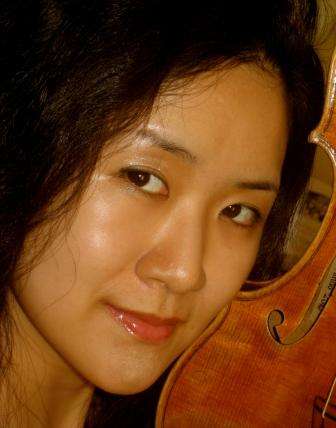|
Back
Petroleum Blues New York
Merkin Concert Hall
05/04/2013 -
“Change”
Caleb Burhans: Requiem for a General Motors in Janesville, Wi
Patrick Burke: Awake
Mohammed Fairouz: Four Critical Models
Judd Greenstein: Change Trilogy
David T. Little: Sweet Light Crude
Jamie Jordan (Soprano), Rayoung Ahn, Alex Shiozaki (Violins), Yves Dharamraj (Cello), Lorenzo Sandi (Double bass), Emi Ferguson (Flute), Carlos Cordeiro (Clarinet), Michael Couper (Saxophone), Maarten Stragier (Electric guitar), Katie Reimer (Piano), Samuel Budish Percussion), Ian Sullivan (Drum set) 
C. Burhans (© Liz Linder)
How could anybody resist a concert which began with Requiem for a General Motors in Janesville, Wi and finished with sweet light crude?
Actually, the program of the so politically conscious Mimesis Ensemble wasn’t in that order. And actually, the most interesting pieces had more prosaic titles like Awake and Four Critical Models. Yet the two petroleum-saturated works were the original attractions, and they started Mimesis.
Though the start was a fairly long interview by Katie Reimer, pianist/Artistic and Executive Director of the Mimesis Ensemble with all five composers on stage. The words were illuminating, though the composers, all in their young 30’s, were more graphic in their notes than their words. And The Mimesis Ensemble, with their eclectic unusual consorts, as always, gave some stunning performances.

M. Farouz (© Samantane West/Naxos)
The smallest ensemble was one violin and one alto saxophone, in the most dauntingly titled work, Four Critical Moods, based on words by Milton Babbitt, the usually impervious Theodore Adorno, the condescending Middle Eastern historian Evelyn Baring and the late supremely cerebral Edward Said. (Apologies for minimalizing their descriptions.) Mohammed Farouz’s Four Critical Models didn’t exactly make the words fit the music. But what music it was!

A. Rayoung (© necmusic.edu)
Fiddler Rayoung Ahn and sax-player Michael Couper began with the most highly frenetic notes chasing after each other (Babbitt’s “Make music as much as it can be”?), continuing with a movement of long microtonal passages, going onto a movement of slashing frenzies. Both performers were mesmeric, Mr. Fairouz a composer of endless energy.
Yet it was the following Awake by Patrick Burke which grabbed my attention, for he had done some fabulous translations of gamelan music for his unlikely ensemble of piano, flute, electric guitar, double bass and clarinet. We all know Colin McPhee’s literal rewriting of gamelan for pianos and orchestra. But Mr. Burke took another dimension, emphasizing what is most important when listening to gamelan: the resonances.
Basically, the Balinese gamelan (I don’t know much about the Javanese style) is a fairly simply set of variations on a rhythmic organum in the deepest bass. And while this can go on for hours with different rhythms, strettis, oscillations galore, the stellar music is in the resonance, the echoes of similar instruments.
Mr. Burke accomplished this with the piano giving out the major “bass gong” melodies (with continuous pedaling), and the resonance coming with a synthesis of flute, clarinet, double-bass and electric-guitar oh so subtly echoing and varying until nearly the end.
The final work, Change Trilogy, written for the NOW Ensemble by Judd Greenstein, was in three connected movements, though all written at separate times. With the same ensemble as Awake, he started with a disjointed folkish-melody (the movement was called, yes, Folk Music), and this graduated into more and more complexity, all backed by a near 1950’s jazz style. It was complex, intriguing, fun (flute/clarinet duos by Emi Ferguson and Carlos Cordeiro especially) and was endlessly inventive.
The opening pieces were the petroleum sections. Caleb Burham’s Requiem for a General Motors in Janesville, Wi was indeed a requiem in form and desolation, a chaconne for Mimesis, with some underlying funereal singing by soprano Jamie Jordan. Most impressive was its ending. The work is tonal, and its last notes are.
(That’s right, the last notes are unresolved...)
Ms. Jordan had far more to do with sweet light crude, which David T. Little calls “about light and addiction; about misery; about the perversity of loving your captor. It’s a love song to oil.”
The work crosses over from Baroque counterpoint to bluesy singing to mainstream rock ballad. I never found it terribly convincing, but perhaps with the paradoxical paean cum pain towards oil, it was supposed to enfold us in a viscous circle.
Harry Rolnick
|